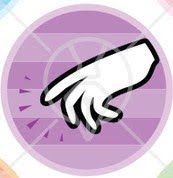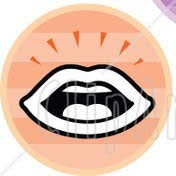 Teaching is a tricky thing. You want the students to learn, but you want them to learn in such a way that they can remember the information and reiterate it if necessary. The problem with many classes now-a-days is that teaching to most teachers involves standing in front of a lecture hall, reading off notes, based on a textbook, that the students have neither any desire to read and if they do happen to read, obtain little useful knowledge out of it. Granted this may be a bleak view of education but this is sometimes how it seems.
Teaching is a tricky thing. You want the students to learn, but you want them to learn in such a way that they can remember the information and reiterate it if necessary. The problem with many classes now-a-days is that teaching to most teachers involves standing in front of a lecture hall, reading off notes, based on a textbook, that the students have neither any desire to read and if they do happen to read, obtain little useful knowledge out of it. Granted this may be a bleak view of education but this is sometimes how it seems.So this months Accretionary Wedge is based on this:
"What out of the box ideas do you use to teach people about geology or geological concepts?" No need to limit yourself on ideas you have actively used. If you have used it and you think it is good, great. Is it an idea you have worked up on and gotten ready but haven't had the chance to use it yet, also great (this is pretty much my scenario). What if it is just a theory that you think would be something different and cool, even better. Anything works, as long as it is "Outside the Box" (i.e. not your typical lecture and textbook approach).
And boy did we get a wide variety of ideas. Actually the ideas were spread out enough that made me think that different people use the different senses to try and teach. Anything from touch to taste was sampled and tried, and here are the results of our experiments (some experiments fall into multiple categories so I am only going to list it under the one that seems the most appropriate or fun).
Look
 Out of the five senses this is the easiest for people to take advantage of in teaching. We live in a visual world and geology is in part a visual science. With that in mind, several of my own teaching ideas have taken advantage of this including using geological movies as a teaching tool, (You can check out Part 1 of Dante's Peak) or using classic works of literature to introduce different geological concepts (like creating topo maps in Thoreau's Walden).
Out of the five senses this is the easiest for people to take advantage of in teaching. We live in a visual world and geology is in part a visual science. With that in mind, several of my own teaching ideas have taken advantage of this including using geological movies as a teaching tool, (You can check out Part 1 of Dante's Peak) or using classic works of literature to introduce different geological concepts (like creating topo maps in Thoreau's Walden). Kim over at All My Faults are Stress Related has gone in a different direction. Instead of blocking her student's use of the internet, she encourages it. She uses the internet and Google Earth to teach about volcanoes across the globe. She directs the students to pick one of several volcanoes and using Google Earth, they have to determine if there are recent eruptions and evidence of lava, ash fall, or mudflows. After that they can use the Global Volcanism Program to get other information available on the volcanoes including recent eruptions and the type of lava erupted.
Listen
 Using hearing as a teaching tool is not a novel idea. Typically this is the principle learning technique used in lectures but there are novel ways that this can be used. Dr. Tony Ekdale had come up with a unique way to use sonification in paleontology. "In paleontology, it is possible to render various aspects of fossil shapes, such as cephalopod suture patterns or brachiopod commissure lines, as a series of musical tones that can be recognized easily by the human ear... Evocative sounds can generate vivid images in our mind's eye. For several centuries, natural sounds have been incorporated into art." He used the natural variances in suture patterns and other paleontological patterns to create differing audible patterns. Definitely a unique take on paleontology.
Using hearing as a teaching tool is not a novel idea. Typically this is the principle learning technique used in lectures but there are novel ways that this can be used. Dr. Tony Ekdale had come up with a unique way to use sonification in paleontology. "In paleontology, it is possible to render various aspects of fossil shapes, such as cephalopod suture patterns or brachiopod commissure lines, as a series of musical tones that can be recognized easily by the human ear... Evocative sounds can generate vivid images in our mind's eye. For several centuries, natural sounds have been incorporated into art." He used the natural variances in suture patterns and other paleontological patterns to create differing audible patterns. Definitely a unique take on paleontology.Touch
 Out of most of the sciences out there, geology is one of the few where touch is the principle method of learning. You need to touch and look at the rocks, minerals, maps and so on to really get a grasp at what you are dealing with. With that in mind Lockwood over at Outside the Interzone has come up with several different methods where students can use their hands to create different Earth systems. Some of his highlighted activities includes creating a 13 meter (that's right, 13 meter!) 1:1,000,000 scale cross section of the earth to demonstrate convection. Another is using iron filings and a magnet to show "how magnetic inclination can be used to determine paleolatitude." He also links to the massive manual From Mountains to Monsoons that he helped work on with step by step instructions on how to complete these and several other activities.
Out of most of the sciences out there, geology is one of the few where touch is the principle method of learning. You need to touch and look at the rocks, minerals, maps and so on to really get a grasp at what you are dealing with. With that in mind Lockwood over at Outside the Interzone has come up with several different methods where students can use their hands to create different Earth systems. Some of his highlighted activities includes creating a 13 meter (that's right, 13 meter!) 1:1,000,000 scale cross section of the earth to demonstrate convection. Another is using iron filings and a magnet to show "how magnetic inclination can be used to determine paleolatitude." He also links to the massive manual From Mountains to Monsoons that he helped work on with step by step instructions on how to complete these and several other activities.Taste
 Food seems to be a big motivation factor in alternative teaching. Christie over at Christie at the cape currently uses cake (that's right, mmmmm cake) to teach about deformation. "As it turns out, cake deforms elastically at low stress and non-recoverably (let's call it viscous) at higher stress. The students cut as many sample cores from the cake as they can. This leads to a bit of waste, invariably eaten, thereby increasing the general level of (blood sugar) excitement in the room. Load is applied by placing other food items (of labeled mass, e.g. small cans and jars) on top of the cake cores. The students measure the surface area of contact and calculate applied stress."
Food seems to be a big motivation factor in alternative teaching. Christie over at Christie at the cape currently uses cake (that's right, mmmmm cake) to teach about deformation. "As it turns out, cake deforms elastically at low stress and non-recoverably (let's call it viscous) at higher stress. The students cut as many sample cores from the cake as they can. This leads to a bit of waste, invariably eaten, thereby increasing the general level of (blood sugar) excitement in the room. Load is applied by placing other food items (of labeled mass, e.g. small cans and jars) on top of the cake cores. The students measure the surface area of contact and calculate applied stress." A bit fattening maybe, but an awesome use of baked goods. Another healthier example is brought to us by Ian over at Hypo-theses who wants to use "a banana as an analogue for rock deformation in general, and fault propagation folding in particular. Grasp an end in each hand leaving at least the central third free. Slowly move your hands towards each other. Initially the banana will deform ductilely, and actually thicken. After the initial thickening, the banana will start to fold." He accompanies these instructions with step by step pictures of a slowly deforming banana as well as a real life comparison to his mutated fruit. And when your done, you can counter act that sheet of cake you ate previously.
Smell
Smell
 Smell is one weird teaching technique that is a bit hard to quantify so I determined that Callan's method from the NOVA Geoblog about using sweat stains as an analogy for ore bodies is the best "smell learning technique". It shows how "certain types of ore bodies are thought to be 'sweated out' from magma chambers as they intrude to shallow enough levels in the crust... These hydrothermal disseminated deposits end up in the pore spaces of surrounding rocks, or filling in cracks. This is kind of like how your body sweats out a solution of dissolved salts in water." Ewww, but definitely a fitting analogy, if not a smelly one. He also goes on to describe how peanut butter between bread can be used to show how igneous sills work and how a Mack truck can be used to show how exotic terrains can be accumulated by a drifting continent.
Smell is one weird teaching technique that is a bit hard to quantify so I determined that Callan's method from the NOVA Geoblog about using sweat stains as an analogy for ore bodies is the best "smell learning technique". It shows how "certain types of ore bodies are thought to be 'sweated out' from magma chambers as they intrude to shallow enough levels in the crust... These hydrothermal disseminated deposits end up in the pore spaces of surrounding rocks, or filling in cracks. This is kind of like how your body sweats out a solution of dissolved salts in water." Ewww, but definitely a fitting analogy, if not a smelly one. He also goes on to describe how peanut butter between bread can be used to show how igneous sills work and how a Mack truck can be used to show how exotic terrains can be accumulated by a drifting continent. -----------------------------------------------------------------------------------------
So although there is a preponderance of typical teaching methods in the geological education community, there definitely is no shortage of people with fantastic and a little wacky out of the box teaching ideas. And who knows, perhaps someday some of these examples will become the norm in teaching.
Make sure you check out next month's Accretionary Wedge being hosted by Dave over at cryology and co.
Body images from http://www.clipartof.com/details/clipart/53287.html
Nice one! I love the organizational theme!
ReplyDeleteThanks, I was trying to think of a theme to put it under and after the cake post, it came to me.
ReplyDelete